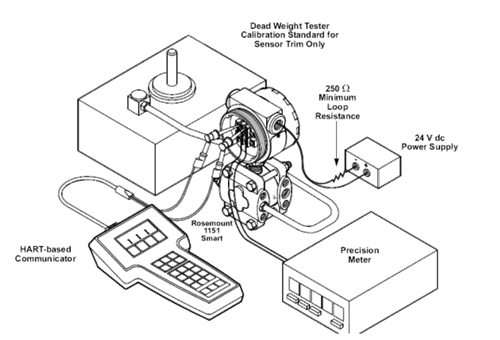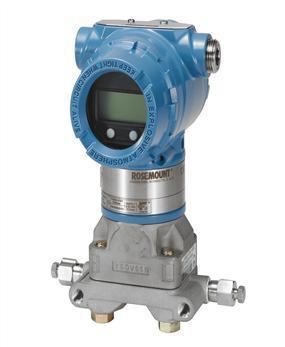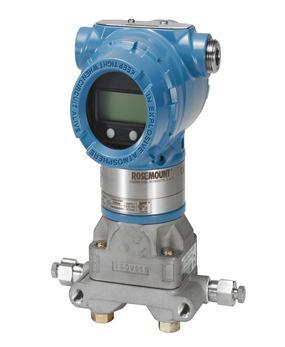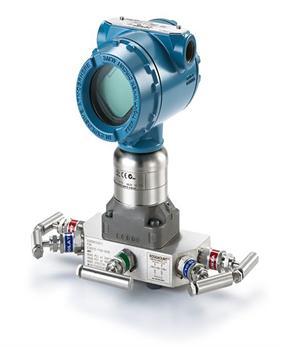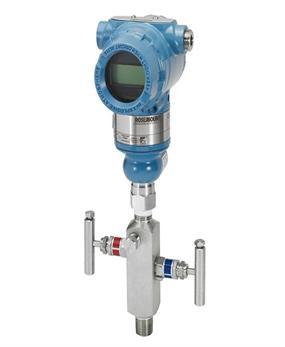BLOG
Learn How to Calibrate a Pressure Transmitter
Brian Craig
April 15, 2017
Transmitters are used in the process industry environments to measure pressure and other parameters. The plant operators rely upon these devices for accurate measurements and process optimization. The performance of these transmitters may weaken with time due to several factors. This is when they need calibration.
During calibration, a comparison is made between the current reading and the standard set reading. This helps plant operators determine the shift in readings and make necessary adjustments.
The calibration procedures may slightly vary across the types of branded pressure transmitters due to their designs. However, there are some general steps to follow before calibrating your transmitter. This post discusses them all.
Basic Setup for Calibrating a Pressure Transmitter
Following are the basic steps before starting the actual calibration.
- Read Instruction Manual: The transmitter can be easily calibrated following the manufacturer’s specific instructions on calibration, provided with the equipment. Read the instruction manual carefully to understand different steps involved in the calibration. Additionally, you can refer various videos available online to understand the procedure.
- Arrange All Instruments Needed for the Calibration: Using a proper instrument is a requisite of any calibration procedure. Arrange all instruments needed for calibration such as pressure gauge, digital multimeter, pressure source, and power supply module (24V). Ensure that the readout device and pressure source used are of great accuracy than the transmitter to be calibrated. Accurate measurements cannot be achieved, if low accuracy equipment are used for the calibration. The instruments used for the calibration of pressure transmitter should be regularly tested to ensure they are working perfectly and serving their purpose.
-
Record Important Information: Before starting with the procedure, you need to record the following information:
- Transmitter Model
- Calibration Range
- Transmitter Maximum Working Pressure
- Transmitter Span
- Follow the Diagram: Most instruction manuals provide the pressure transmitter calibration connection diagram, or you can download the one from the Internet. Connect all equipment appropriately as mentioned in the diagram. To avoid any mistake, you can take several printout of the diagram. You need to pay attention to power source as well as polarity of the transmitter.
-
Prepare the Instrument for Calibration: Mostly the calibration is done in either of the two ways:
- Bench Top Calibration: This is a procedure, where the transmitter is calibrated at a bench using various calibration devices.
- Field Calibration: This is a procedure, where the actual calibration is done as per the tips mentioned in this post.
In both of the above-mentioned types, the low port of the transmitter cell is vented to atmosphere, and the high port to a pressure source. Examples of high port include pneumatic calibrator, pressure regulator, or a hand pump.
After setting up the connection, switch on the power supply, and pressurize the high port. Record the reading of current (mA) and this will be the first reading. Continue pressurizing the transmitter, and record readings in five points – 0%, 25%, 50%, 75%, and 100%. Take down readings for increasing, as well as decreasing input values and corresponding output values.
After the initial setup, you can start with the actual calibration. In the next post - How to Calibrate a Pressure Transmitter – II, we will discuss steps for calibrating the pressure transmitter.
Related Posts
Pressure Monitoring in Pump Systems: A Comprehensive Guide
Common Challenges in Air Flow Measurement and How to Overcome Them
Monitoring and Controlling Energy Production in Power Plants
Understanding the Impact of Pressure Fluctuations on Drying Performance
Understanding Pressure Ranges and Units for Fluid System Monitoring
The Benefits and Challenges of HVAC System Balancing
An Ultimate Selection Guide for Flow Transmitters
Procedure to Calculate Accuracy of Pressure Transmitter Discussed
Pressure Transmitters vs. Pressure Transducers: Learn the Differential Characteristics
Multivariable Transmitter: What Is It and How Does It Work?
How Do You Test for 4 to 20mA Signal in a Pressure Transmitter?
Temperature Transmitter: How to Select The Efficient One for Your Application?
Flow Meter vs Flow Transmitter: Know the Difference
Absolute and Gauge Pressure Transmitters - Overview and Working Principle
HART Communication Protocol: Overview, Working Principle, Benefits in Industrial Automation
What is Absolute Pressure Transmitter & how does it work?
How Do You Calibrate A Flow Transmitter?
Remote Seals: Significance, Working Principle & Applications
How to Select Pressure Transmitter for Your Application?
How to Choose Diaphragm Seals for Your Application?
Difference in Conventional Transmitters and Smart Transmitters
What Are Diaphragm Seals and Their Types?
Rosemount 2088 Vs Rosemount 3051 – A Few Points of Differences Discussed
Rosemount 3051S vs 3051C Transmitter – What is Your Choice?
Impact of Shock and Vibration on Pressure Transducer
Safety Tips for Differential Pressure Transmitter Operation
Factors to Consider When Choosing a Pressure Transmitter Manifold
Tips to Improve the Performance of Pressure Sensors
Important Calibration Tips for Pressure Sensors
5 Most Popular Pressure Transmitter Technologies
Factors of Consideration When Choosing Pressure Transmitters
Tips to Augment the Performance and Service Life of Pressure Transmitter
Factors To Be Considered While Differentiating $40 and $400 Pressure Transmitters
An Unconventional Guide to Selecting the Right Pressure Sensor
3 Major Pressure Transmitter Technologies That Made the Device Popular
The Features and Benefits of Rosemount 1199 Direct Mount Transmitters
What are the Steps Involved in Calibrating Pressure Gauge?
All Important Questions on Reconditioned Transmitters Answered
Is Remanufactured Transmitter a Better Option than a New One?
Differential Pressure Transmitters: How Do They Help in Flow Measurements?
3 Whats that Explain How Often You Should Calibrate Pressure Transducer
Guidelines for Troubleshooting Pressure Transducers
Learn How to Calibrate a Pressure Transmitter – II
Know Three Interesting Uses of Pressure Transmitters








